How Asset Tracking Can Save Time and Money for Hospitals
 More time at work? More time with family? More time to yourself? If only “time” grew on trees!
More time at work? More time with family? More time to yourself? If only “time” grew on trees!
Time is an especially valuable resource in hospitals. A 2016 survey of more than 17,000 physicians conducted by the Physicians Foundation found that “only 14% of physicians have the time they need to provide the highest standards of care”.
Not only do physicians need more time, but the same goes for other clinical staff. At the very front line of hospital care delivery we see both an increase in nurse workload as well as a growing workforce shortage that only compounds the problem. Hospitals are having to focus on recruiting and retaining employees while also looking for ways to increase the efficiency and effectiveness of care.
WHERE DOES TIME GO?
Nurses provide the most impact when their time is spent taking care of patients. Patient care activities, coordination and clinical documentation are key to increasing positive patient outcomes. It is not surprising that lower patient-to-nurse ratios (aka, more time with patients) is linked to increased patient satisfaction and lower mortality rates.
What is pulling nurses away from these activities? It turns out a lot of time is spent waiting (waiting for patients, rooms, equipment), prepping equipment, transporting patients and various non-clinical administrative duties.
To quantify that, researchers did a time and motion study to document how over 750 nurses in the medical-surgical units spent their time during a 10 hour shift. The good news is that the majority of their time was spent on core nursing responsibilities (labeled as nursing practices in the image below). However, almost 20% of their days were spent on non-clinical or wasteful activities!
Especially concerning is the time categorized as purely “waste”. This usually includes time spent looking or waiting for medical equipment. Not only is this inefficient for the nurse, but more importantly a delay in critical medical equipment can have life or death consequences for patient care.
TIME ADDS UP
While 20% might not sound like a lot, this is over 1.5 hours on a single 10 hour shift. Spread over a full year, this equates to over 40 full days spent on waste or non-clinical activities. Getting over 40 days back in your year would be extremely valuable!
HOW CAN ASSET TRACKING HELP?
What if all of that time spent looking for equipment could be eliminated? Asset Tracking solutions can do just that. For example, the SwipeSense Asset Tracking tool is mobile-enabled for ease of use and offers location-based asset tracking. It’s very similar to the “Find My iPhone” function on your smart device but for healthcare assets. In addition, features like location-based alerts when certain assets leave designated areas save even more time and money by making sure equipment stays where it needs to be. If you continue to experience issues with telemetry modules going in the wash, this is a great solution.
Ultimately, searching for ‘lost assets’ on a consistent basis leads to poor outcomes for patients. Compound that with increasing per bed overhead by purchasing new equipment to the replace the ‘lost equipment’ and your business suffers. SwipeSense can help eliminate these problems.
Contact us to see how the SwipeSense Asset Tracking System can give you hours back in your week and pay dividends!

